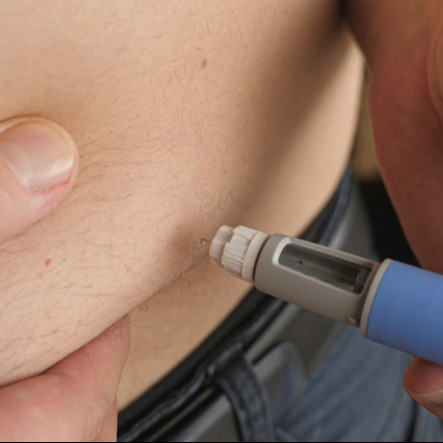
Effectively managing type 2 diabetes involves the proper use of an Ozempic® pen. In this comprehensive blog post, we will provide you with instructions for recognizing when your pen is empty and how to replace or restock the device. Additionally, we will offer advice on the correct storage methods for these pens. By following these guidelines, you can optimize your treatment program and ultimately achieve better overall health outcomes.
Key Takeaways
Understanding and recognizing when your Ozempic pen is empty is essential for effective medication delivery.
Proper storage, injection techniques, and monitoring of blood sugar levels can maximize the effectiveness of treatment plans with an Ozempic pen.
Regular inspection to prevent damage or malfunctioning pens, as well as evaluation of weight loss progress should be done in order to assess the efficacy of using an Ozempic pen.
Understanding Your Ozempic Pen
The Ozempic pen is a convenient pre-filled device used to administer Ozempic injections, which are prescribed for the treatment of type 2 diabetes. These injections help your body release insulin, reduce glucagon, and slow down digestion, all of which are great for the management of diabetes. To ensure the effectiveness and safety of your Ozempic Pen, it’s important to store it correctly. Understanding how to use this injectable medicine properly will give you the best results.
Components of the Ozempic Pen
The Ozempic pen is a device used to administer an injection containing Ozempic (semaglutide), its active ingredient. It also consists of components such as disodium phosphate dihydrate and propylene glycol that help in keeping the drug stable and provide preservative qualities. A water solution for injections may also be included with this medication.
It’s crucial to understand the purpose of each component to ensure the successful delivery of the correct dosage, something your pharmacist or healthcare provider can explain if necessary. Lowering blood sugar levels with semaglutide depends on these elements within the Ozempic pen working together correctly. Otherwise, administering only one component won’t be sufficient in treatment plans using this particular medication. Therefore, understanding the composition of the pen is an important consideration moving forward.
Ensure you have all the necessary information regarding both potential side effects and benefits before starting any treatment course that involves the use of Ozempic pens, whether administered by a pharmacy professional or other registered medical personnel.
How the Pen Works
The Ozempic pen is designed to precisely deliver doses of the medication via injection into a person’s abdomen, thigh or upper arm. It activates GLP-1 receptors and triggers insulin release from the pancreas which can help individuals with type 2 diabetes regulate their blood sugar levels and potentially achieve weight loss.
For optimal performance when using this product, it's essential to follow proper storage methods, including avoiding freezing, as it can impair Ozempic's potency.
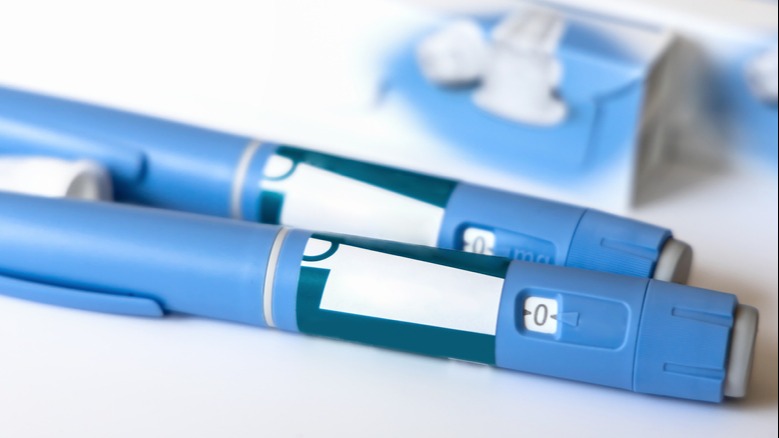
Recognizing an Empty Ozempic Pen
It is important to identify when an Ozempic pen needs replacing in order to ensure the correct dosage of medication is being administered. Inspecting both the dose indicator and cartridge are two easy ways for you to detect a depleted device. As with any other medication administration, it’s essential for users to follow guidelines precisely to ensure they can achieve optimal results with their Ozempic pen every time.
Dose Indicator
The dose indicator on the side of the pen has a window that shows the remaining number of doses. To use it, turn the dial until you see your desired dose number in the counter display. When there is no more medication left (the display shows “0”), it means it is time to switch to a new pen with filled doses.
Inspecting the Cartridge
By removing the cap of the pen and inspecting its interior, you can determine if there is medication inside. If no medication is visible, then it’s safe to conclude that your pen has run out of doses.
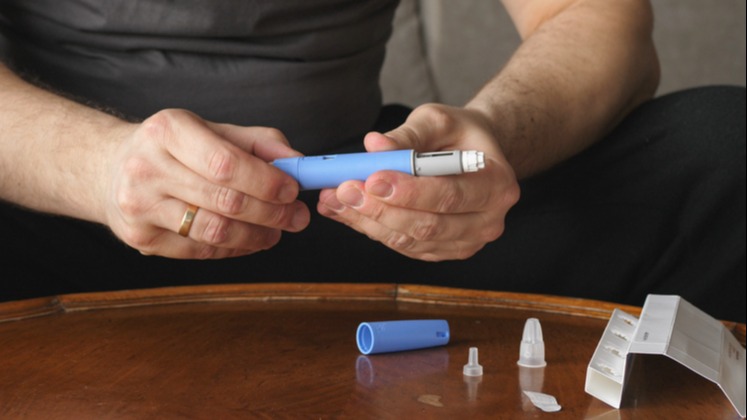
What to Do When Your Ozempic Pen Is Empty
When your Ozempic pen is empty, it’s time to replace it with unused pens. Make sure you speak with a healthcare provider if needed for guidance on how to proceed. Accurate delivery of the doses in this manner allows you access to correct amounts of medication every time—something that cannot be compromised when discussing therapy or treatment plans involving Ozempic products and medications. Utilizing new Ozempic pens can make all the difference!
Replacing the Pen
Dispose of the empty cartridge according to appropriate regulations, such as an FDA-approved sharps container for needles. Obtain a new pen from your healthcare provider or pharmacist and make sure you place the cap back in place before storing it. This will ensure the efficacy and security remain intact. Always keep these steps in mind when seeking a new prefilled pen.
Contacting Your Healthcare Provider
If you are worried or uncertain about using the Ozempic pen and its effectiveness in your ongoing treatment, contact a healthcare provider for guidance. Through this consultation process, they can help ensure that you use all aspects of the medication correctly to get optimal results. With their help, any questions about the application of Ozempic will be answered promptly and accurately, leaving no room for confusion regarding its correct usage.
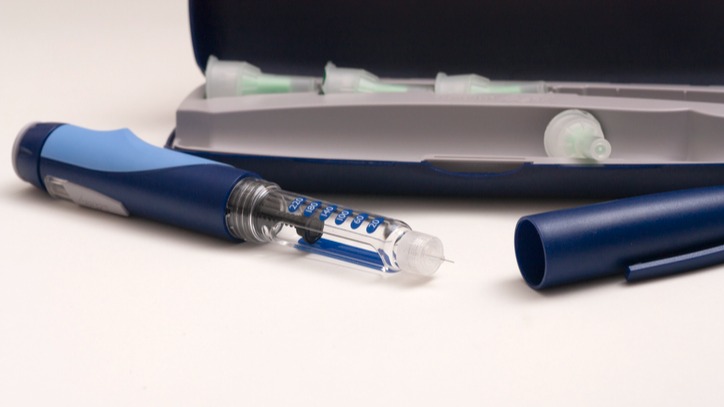
Tips for Proper Ozempic Pen Use
Using your Ozempic pen correctly is more than just knowing when it’s empty. You should also store and administer injections in accordance with proper guidelines to maximize healthcare efficiency. By adhering to these procedures, individuals can ensure that their treatment plan progresses optimally, making a significant contribution to overall well-being.
Storing Your Pen
For its effectiveness and safety, store the pen in accordance with temperature regulations. Refrigerate it between 36°F (2°C) to 46°F (8 °C) before using it for the first time. Then keep it at room temperature, ideally between 59 ˚F and 86 ˚ F (15 – 30º C). Remember not to use it beyond 56 day, and discard any remaining medication after that period, even if there is some left.
Avoid exposing the pen to extreme heat or direct sunlight, as these factors can affect the potency of the medication. If you haven’t stored it within the recommended temperature range prior to initial usage, consult a healthcare provider immediately, as this could impact both the efficacy and expiration date of the drug. Additionally, be aware that certain medications may require continuous refrigeration, so check these details with your healthcare provider beforehand.
Administering Injections
It is essential to follow the proper steps when administering Ozempic injections, as it ensures dose accuracy and helps minimize risk. Before use, make sure that you allow your pen to come up to room temperature, since injecting very cold medication isn’t recommended. Cleanse the injection site with an alcohol swab according to instructions from your healthcare provider before administering the medication using this method.
Keep in mind these useful tips for safe administration: move around between abdominal areas, thighs, and upper arms to avoid skin irritation; always attach new needles before each injection; and always properly dispose of used needles in approved sharps containers per the FDA regulations after usage.
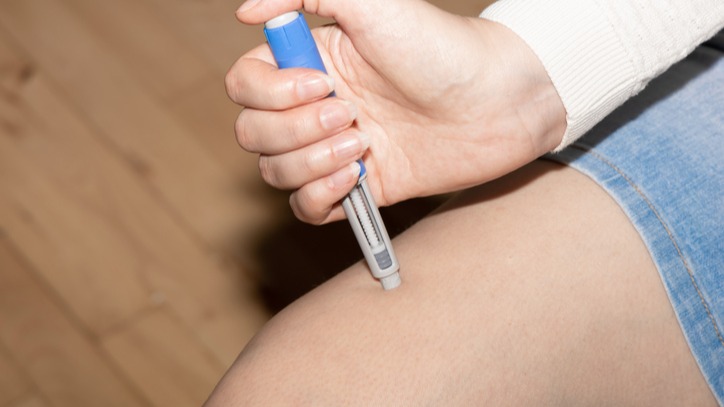
Potential Issues with Ozempic Pens
Being alert to potential problems associated with the Ozempic Pen, such as damaged pens or skipped doses, is essential for administering the medication correctly. By understanding these challenges and knowing how to address them appropriately, you can optimize your treatment plan, which could result in improved health outcomes.
Damaged or Malfunctioning Pens
It is important to regularly inspect your pen for damage or any abnormal functioning, such as cracks and breaks. If you suspect an issue with the device, it is best to consult a healthcare provider. They can determine the most suitable next steps to ensure safe medication delivery and prevent risks due to malfunctioning equipment. Proper storage methods must also be followed carefully. Adhering to the provided instructions when storing pens will reduce the chances of harm and ensure the effectiveness of treatments.
Missed Doses
If you miss a dose of Ozempic, it is essential to know the correct steps to maintain blood sugar control. Your healthcare provider can provide instructions on how best to manage this situation. If you forget a dose and your next one is shortly afterward, simply skip the missed dose. If you've missed multiple doses or encounter any other issues with using an Ozempic pen, contact your healthcare provider. They will assist in adjusting treatment plans accordingly to ensure maximum benefit from the use of the device.
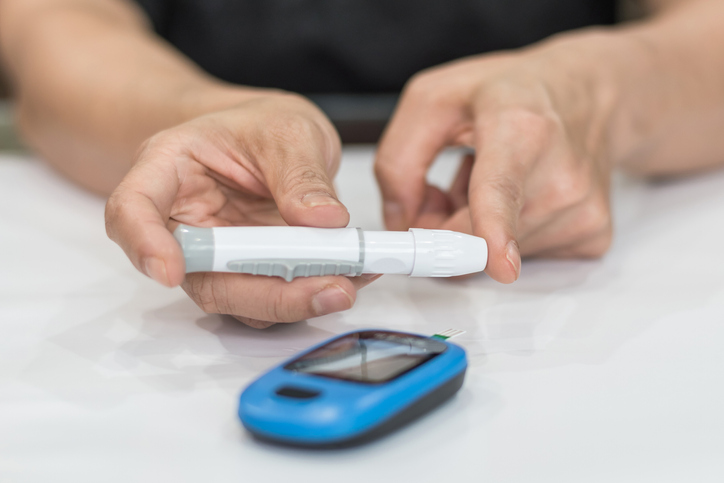
Monitoring Your Blood Sugar and Weight Loss Progress
When taking Ozempic, it is essential to measure your blood sugar levels and monitor your weight loss progress in order to ensure that the medication is effective. Keeping track of these variables will give you a good indication of how Ozempic affects glycemic control and helps with weight management, allowing for adjustments to your treatment plan if needed.
Tracking Blood Sugar Levels
For people living with type 2 diabetes, monitoring blood sugar levels is crucial. Using a glucose meter to measure your blood glucose requires the use of a lancet to obtain a sample, which is then placed on test strips that are inserted into the device. Understanding these results allows you to modify your food choices or medications to lower your blood sugar levels.
In combination with other diabetic treatments, such as Ozempic, monitoring your glycemic control will help optimize health outcomes by assessing the effectiveness of your treatment plan. This allows for modifications when needed to achieve optimal efficacy over time.
Evaluating Weight Loss Progress
Monitoring weight loss progress is key to determine the success of Ozempic in your treatment regimen. There are multiple ways to track this progress, such as maintaining a regular log of body weight, assessing body measurements and fitness levels, and evaluating changes in overall health. Additionally, studying your body composition can be beneficial. These strategies help ascertain whether you’re achieving the desired outcomes with Ozempic, allowing for necessary adjustments to be made to your treatment plan if needed.
Ozempic vs. Rybelsus
A significant drawback of Ozempic is that it must be injected under the skin once weekly. Many patients prefer alternative forms of semaglutide like Rybelsus, which comes in pill form. Rybelsus must be taken every day (as opposed to once per week); however, taking a medication once per day is preferable for many patients. There are no head-to-head comparison trials of Ozempic and Rybelsus; however, the safety and efficacy profiles of the drugs are similar. That is to say that they lower blood sugar and have a modest effect on weight-loss. They are also associated with the side effects of stomach upset, nausea, and vomiting.
Frequently Asked Questions
How Many 0.25 mg Doses Are in an Ozempic Pen?
The Ozempic pen is designed with 8 doses of 0.25 mg for initiation, and 4 doses at a level of 0.5 mg for maintenance. This provides most patients with 4 chances to take their dosage from its corresponding starting point before having to switch pens altogether.
How Long Will an Ozempic Pen Last?
The Ozempic pen contains 4 doses, providing a 4-week supply. An opened pen can be kept for up to 8 weeks before needing to be replaced with a new one. Therefore, it is important that each time you get an Ozempic pen, you use the correct number of individual doses according to your needs and medical advice.
When Should I Throw Out My Ozempic Pen?
Be sure to keep the Ozempic pen at room temperature or in a fridge, depending on its expiration date. After 56 days of use, the pen should be disposed of, even if it still contains some medication. Keeping these points in mind when storing your Ozempic pens is crucial for optimal usage and safety.
How Do I Know If My Ozempic Pen Is Working?
To ensure that your Ozempic pen is in working order, turn the dose selector until it displays the flow check symbol. Then, press and hold down the dose button until the counter reads "0", making sure a drop of liquid comes out from where you inserted the needle tip.
What Happens If Ozempic Isn't Refrigerated?
It is important to check the temperature of your Ozempic pen before use. If it has not been stored in a refrigerator, it should be used or discarded within 56 days after being exposed to temperatures outside of refrigeration, as its expiration date cannot be guaranteed beyond that point. Keeping this medication cool helps ensure safe and effective results when using it.
Rely on PlanetDrugsDirect.com to Buy Online Prescription Drugs
As a trusted prescription referral service, we offer important benefits whenever you order online. Each of our partner pharmacies and/or government-approved dispensaries is committed to providing the best experience possible of any online prescription referral service on the internet. We offer:
Low prices
Quick turn-around times
Generic and brand-name medications
Unparalleled customer service
Sources
How to Use The Ozempic® Pen | Ozempic® (semaglutide) injection
How To Use The Ozempic Pen: A Step-by-Step Guide - The Cognition Sentinel (supsalv.org)
Video: Ozempic® (semaglutide) injection 0.5 mg, 1 mg, or 2 mg Pen Instructions for Use | novoMEDLINK™
 Medically reviewed by
Medically reviewed by 